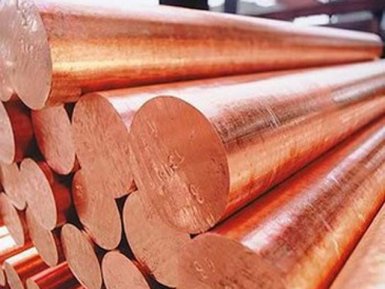Processing, rolling and deformation of bronze

Are you interested in the technology of bronze pressure treatment from the supplier company AvecGlob? Here you will find the necessary information on this topic.
Rolling
Cold treatment of copper and copper alloys by rolling or other methods increases tensile strength and yield strength in a very predictable manner. Most bronze alloys are available for cold-rolling treatments. As a result of the treatment, tensile strengths are increased, which are unique for each alloy and for a certain temperature. After rolling, the bronze blanks are subject to annealing.
Silicon bronzes are less suitable for rolling, which are characterized by reduced plasticity. If necessary, the use of rolling, the same bronze is deformed in the hot state, and for several passes, slightly increasing the degree of deformation for each subsequent pair of rolls.
Supplier — AvekGlob Company — offers to purchase assortment of various bronze alloys of domestic and foreign brands. Products can be bought at a price formed on the basis of European and world standards. Implementation is possible in bulk and retail, for regular customers, there is a flexible system of discounts
Stamping and forging
Bronze forgings have the following advantages:
• Excellent mechanical performance
• high density;
• dimensional accuracy;
• Repeatability;
• excellent surface finish
Forging improves the mechanical properties of bronze. This is usually associated with an increase in strength and resistance to abrasion. In addition, as the degree of deformation increases, a number of bronzes become harder, which leads to an increase in the operational durability of the parts.
A number of brands of bronze, characterized by increased fluidity, are treated by casting.
Desired qualities of the finished part usually determine the types of production processes used.
Cold processing
The ability to use cold stamping depends on the chemical composition of the alloy and the properties that the metal acquires after annealing.
With cold stamping, the hardness and strength of the finished product increase. With appropriately manufactured dies, you can achieve high dimensional accuracy and surface quality. More often cold stretching, disembarkation and extrusion are used.
Warm and hot stamping
Manufacturers use these processes to create complex shapes, the production of which in the cold state is energy-intensive. Hot-rolled bronze alloys are characterized by increased ductility at high temperatures. Heating is carried out in furnaces with a controlled atmosphere. These processes are used to produce products of large overall dimensions, as well as from a thick bronze sheet.
Supplier — AvekGlob Company — offers various types of rolled and cast bronze from domestic and foreign production. The products are offered at affordable prices from the manufacturer. The supplier guarantees the timely delivery of products to any address specified by the consumer.


